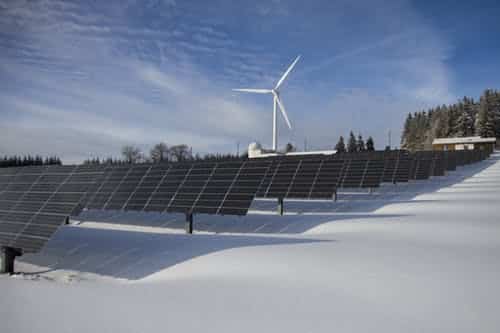FERC Updates PURPA Implementation to Reflect Market Changes

The Federal Energy Regulatory Commission on July 16 revised regulations implementing the Public Utility Regulatory Policies Act of 1978, or PURPA, which established requirements for utilities to purchase power from small independent electricity generators and cogeneration facilities. The final rule increases flexibility for states in establishing rates at which qualifying facilities sell their output and lowers the threshold below which these generators are presumed to have non-discriminatory market access to 5 megawatts from 20 megawatts. The reforms are intended to address changes in the energy markets since the law took effect.
Among other changes, the agency modified the “one-mile rule,” which required two or more facilities to be one mile apart to be considered independent. The new rule requires parties to show that facilities are more than one mile apart but less than 10 miles. The revisions require qualifying facilities to prove commercial viability and financial commitment to construct under objective and reasonable standards to obtain obligations for the purchase of their power.
Commissioner Richard Glick dissented in part saying that the agency is “attempting to accomplish via administrative fiat what Congress has repeatedly declined to do via legislation.” Glick expressed concern over uncertainty for qualifying facilities, noting that short-term spot prices may not reflect the long-term marginal energy costs avoided by purchasing utilities, particularly outside of wholesale markets.
The Solar Energy Industries Association also expressed disappointment saying that the changes will “undermine the stated intention of the PURPA statute and stifle competition, allowing utilities to strengthen their monopolies and raise costs for customers.”
PURPA was originally intended to reduce dependence on foreign oil and promote small renewable energy and cogeneration facilities from which utilities must buy power at administratively-set avoided costs the utility would incur to produce the power. PURPA authorizes the states to set how much a utility is obligated to pay QFs for the electricity they have produced.
Since the enactment of PURPA in 1978, the energy landscape has undergone considerable changes given the development in wholesale markets and retail competition, and the shift from coal to natural gas and renewables, driven by economic forces and technological advancement. The declining cost of new generation has sparked a debate over avoided costs, prompting utility complaints that PURPA mandates have resulted in overpayments to solar and forced them to buy electricity even when they do not need it. The Energy Policy Act of 2005 revised PURPA by exempting utilities from the law’s mandatory purchase obligation if they had access to a competitive wholesale power market. In states not served by competitive wholesale markets, PURPA still has a significant impact.
EnerKnol Pulses like this one are powered by the EnerKnol Platform—the first comprehensive database for real-time energy policy tracking. Sign up for a free trial below for access to key regulatory data and deep industry insights across the energy spectrum.
ACCESS FREE TRIAL